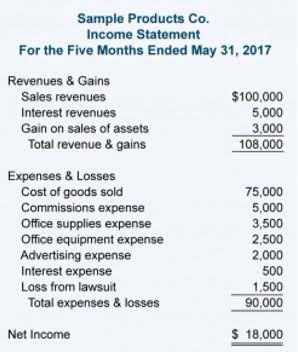
Sec. 1.263A-1(e)(3)(ii)(U) and was required to be capitalized to inventory and relieved through cost of goods sold. Further, due to the mechanics retained earnings balance sheet of the simplified production method used by the taxpayer, these royalty costs were allocated to ending inventory even though the costs were not incurred until the goods were sold. Stripe Revenue Recognition streamlines accrual accounting so you can close your books quickly and accurately. Automate and configure revenue reports to simplify compliance with IFRS 15 and ASC 606 revenue recognition standards. Trusted by the biggest names across diverse industries, we understand vertical quirks, unique business nomenclature, languages, UI needs, and more. We configure our royalties engine to your business instead of the other way around.
- These Treasury regulations allow a deduction for costs relating to selling, marketing, and distribution.
- The royalty agreement stipulates a 5% royalty on all net sales of the devices that use the software business’s technology, and royalties are payable quarterly.
- This provision allows the short workings to be carried forward and adjusted in the future.
- The goal of royalty revenue recognition is to ensure that revenue is recognized only when the business has earned it.
- Franchisees pay a percentage of their sales as a royalty to the franchisor, allowing them to benefit from the established brand and proven business system.
Importance of Minimum Rent in Royalty
- It’s important to note that the specific terms and conditions of royalty agreements can vary widely based on factors such as the industry, the asset involved, and the negotiating power of the parties involved.
- Clear disclosure practices mitigate risks by providing relevant information about the financial impact of royalty agreements.
- For example, a patent with a 20-year legal life would typically be amortized over that period unless a shorter economic life is evident.
- The information contained herein is of a general nature and based on authorities that are subject to change.
- As industries evolve, so too does the complexity of managing these transactions.
Additionally, cross-licensing agreements, where companies exchange access to their respective technologies, add another layer of complexity to royalty calculations. Measuring royalty Accounting Security obligations involves determining the amounts payable to rights holders, which can be a complex process depending on the terms of the royalty agreement. These obligations are typically calculated as a percentage of revenues generated from the sale or use of the licensed product or service. However, the structure of these payments can vary, including tiered rates, minimum guarantees, and advances against future royalties.

Adjustments of minimum rent in case of strike / Lockout /
- Royalty agreements often involve audit rights and reporting obligations, adding another layer of complexity.
- For instance, a software company might have a performance obligation to maintain and update a licensed program, thereby earning its royalties.
- For royalties, this means that income is recorded during the period that a licensee uses a licensed asset and generates sales or other revenue from it; this might not be the same period in which payments are made.
- Although individual properties are often accounted for individually, it is sometimes more economical to merge the accounts.
- They are based on an agreed-upon percentage of revenue, profits, or a flat fee and serve as compensation for the use of intellectual property or other valuable assets.
- This includes the duration of the agreement, its geographic limitations, the type of products and the rates of royalty cuts.
For other royalties such as mineral properties, there are two ways in which royalties can be computed; based on the units produced or revenue. The Tax Court agreed with the IRS and rejected the taxpayer’s argument that the contingent royalty took the cost out of the realm of Regs. It held that because the royalty payment was for the right to use a certain production process, that payment was indeed an includible indirect cost under Regs.
“Food and Beverage Licensing Stays Hot” – Stephen Reily featured in License Global Magazine Again
For example, a licensing agreement may specify royalties based on net sales, requiring clarity on allowable deductions like returns and discounts. This article examines the various types of royalties, methods of calculating payments, and their financial impacts on businesses and creators. Readers will gain insights into optimizing royalty agreements and managing financial outcomes effectively.


Amount of royalty charge to profit and loss account will be Rs. 1,000,000/- and balance amount of Rs. 100,000/- will be deposited in the credit of central Government account. Right of recoupment will be decided for the fixed period or for the floating period. When the right of recoupment is fixed for the certain starting years from the date of royalty agreement, it is said to be fixed or restricted.

Proven Ways to Save Your Brand from the Brink: Business Comeback Stories

IFRS 15, for instance, has a significant impact on the recognition of revenue from contracts with customers, including those involving royalties. This standard royalty accounting requires entities to allocate the transaction price to the performance obligations in a contract and recognize revenue when (or as) the entity satisfies a performance obligation. MetaComet® Systems makes royalty accounting much easier, by automating complex calculations and enabling easy and fast payments. Our Royalty Tracker® integrates seamlessly with your other accounting systems, dramatically reducing the time spent reconciling statements and updating financial ledgers. Contact us to learn how our royalty reporting software can save you 90% of your royalty management time, while eliminating royalty errors and stress. Ensuring compliance with accounting standards, such as ASC 606 or IFRS 15, presents its own challenges.
